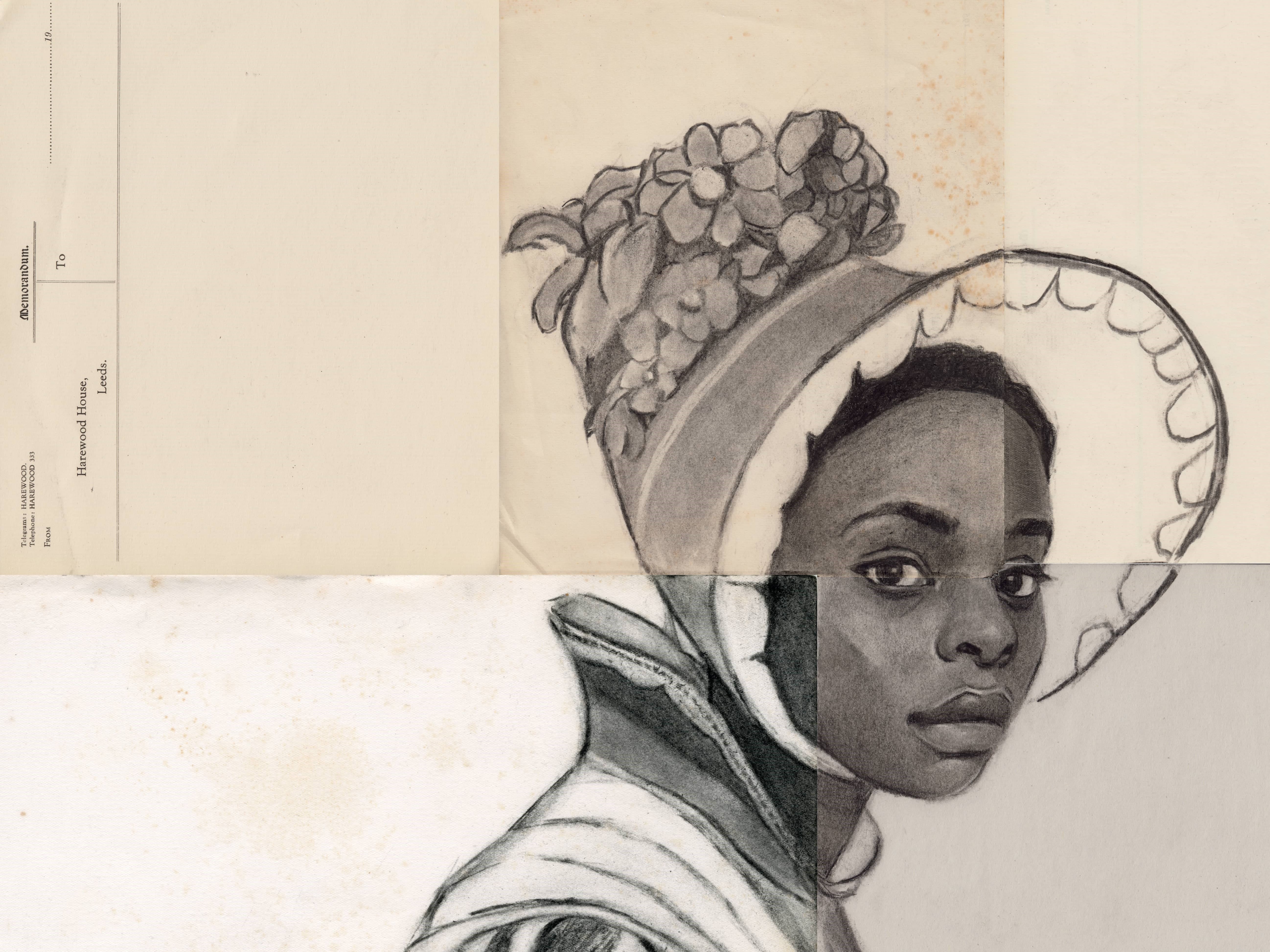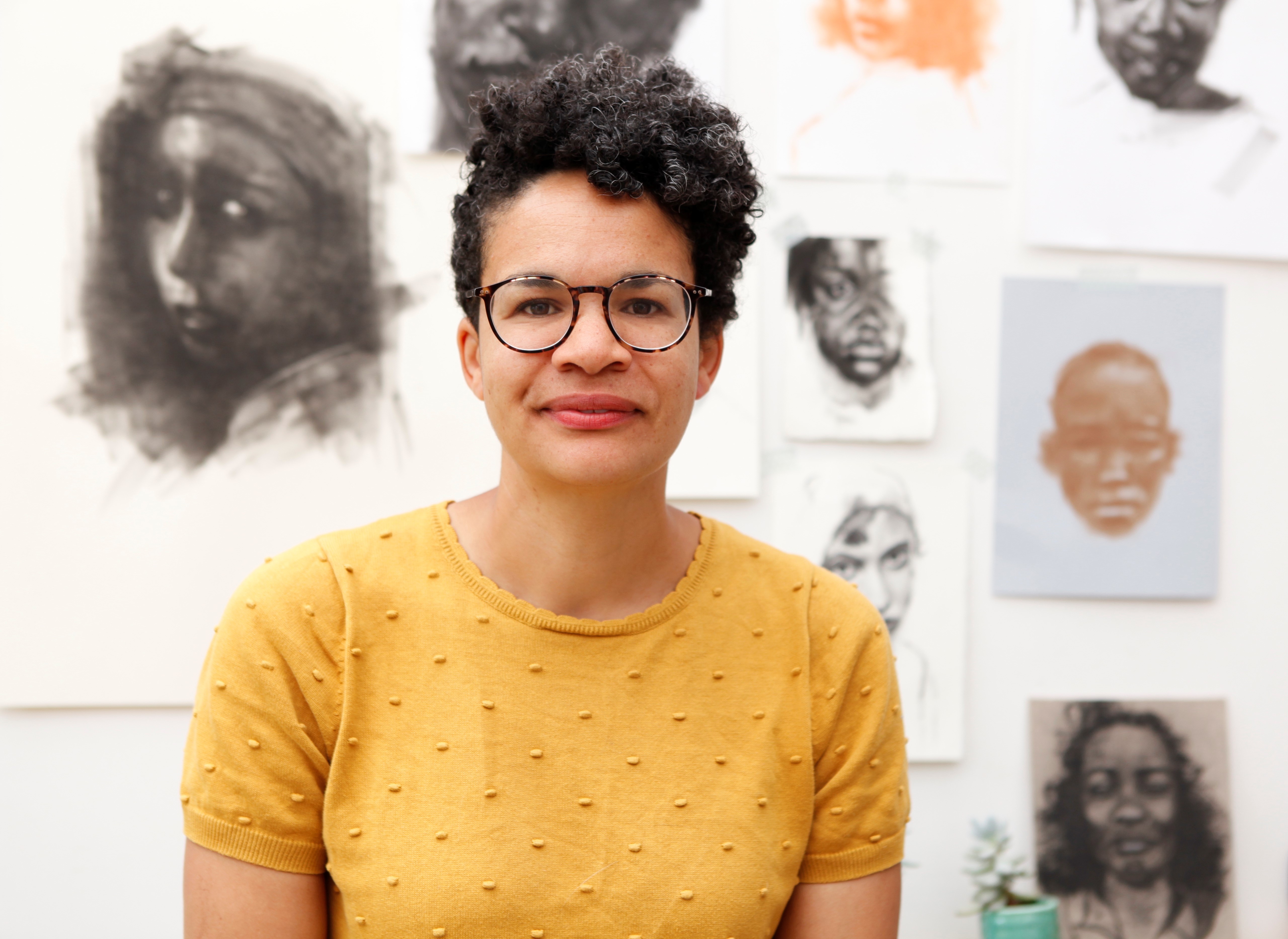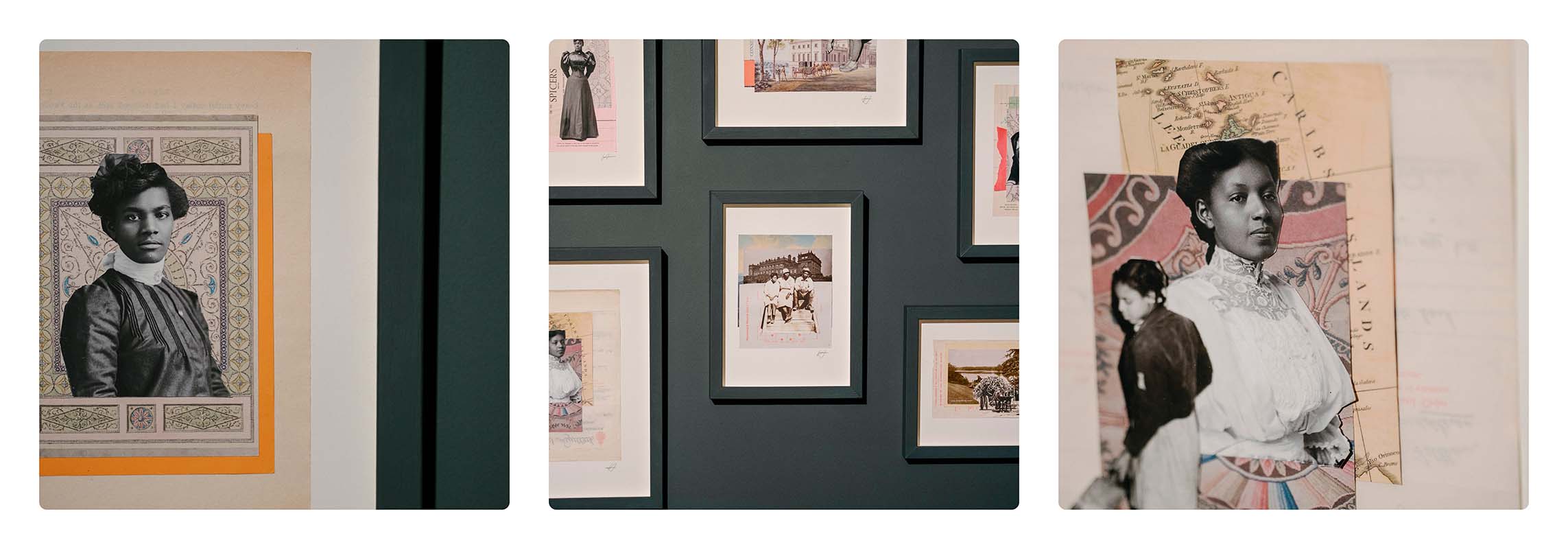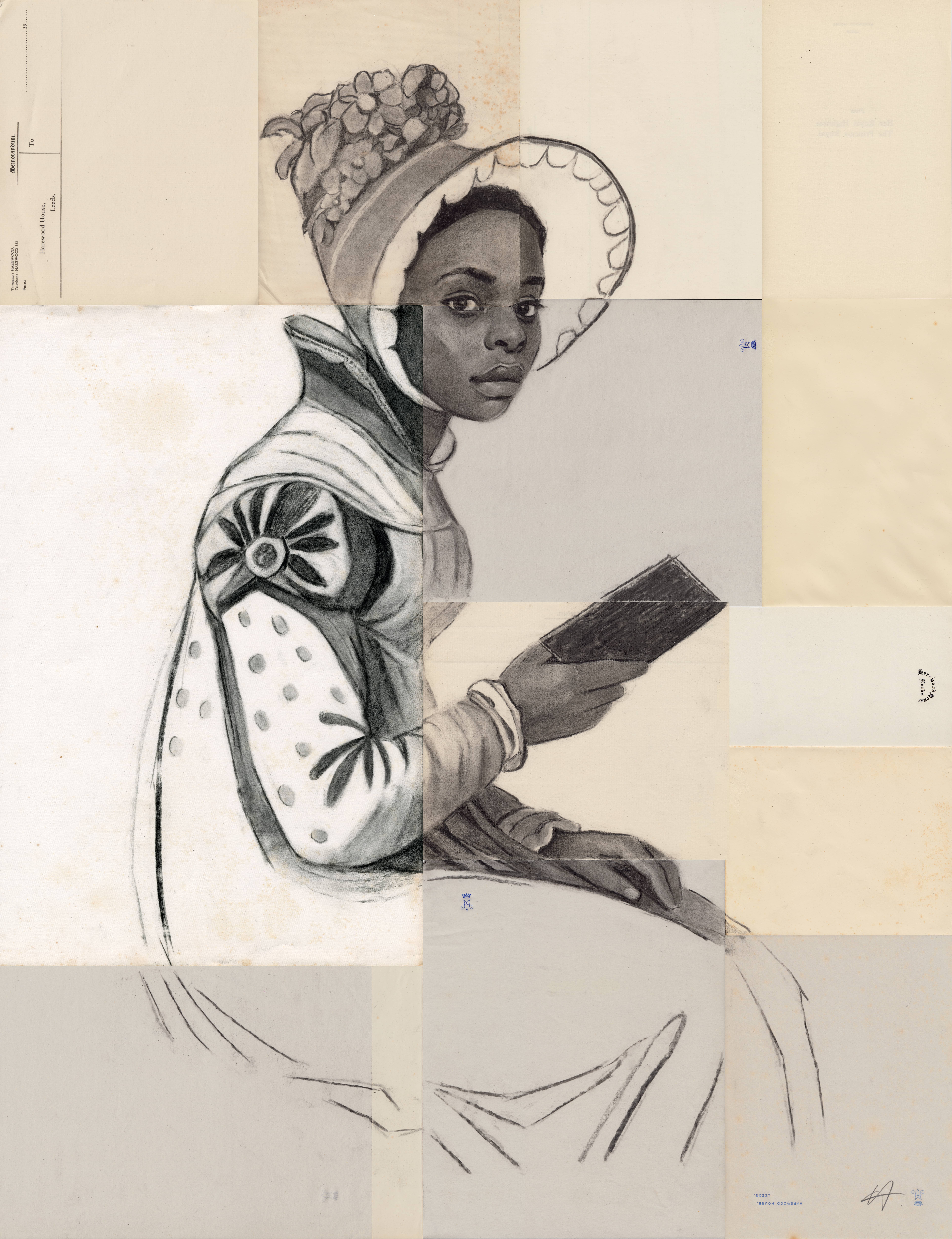
A unique commission giving light to the incredible work of Kendal artist Lela Harris has been unveiled at Harewood House, as part of the 18th century property’s exhibition celebrating the 250th anniversaries of the landscape painter JMW Turner (1775-1851) and novelist Jane Austen (1775-1817).
Co-curated by Harewood House Trust and the Centre for Eighteenth Century Studies at the University of York: for the very first time, the work of these two cultural figures has been brought together, examining the legacy of the pair of British icons born into an era of huge social change.
With Harris’ portrait at its centre – a range of events and activities at the North Leeds stately home celebrates Austen and Turner, uncovering their shared interest in the society and culture of the British country house and its landscape.
Originally from Manchester, but now very much a part of the Cumbrian painting and wider creative community, Harris is a self-taught artist who works across the techniques of painting, drawing and collage.

With a strong focus on portraiture, often depicting those who have been overlooked or marginalised by history, her work is inspired by historical research and documentary photography, driven by a desire to uncover the stories of those forgotten or marginalised by society. Giving depth and humanity to each of the figures she depicts, Harris’s portraits become powerful explorations of identity and belonging.
Since 2021, Harris has explored the relationship between text and image in several commissions for the Folio Society, illustrating a new edition of The Color Purple by Alice Walker and, more recently, James Baldwin’s defining work of modern literature, Giovanni’s Room.
The striking work commissioned by the exhibition depicts Miss Lambe, a character from Austen’s unfinished novel Sanditon. Miss Lambe is unique in Austen’s novels as a character of African heritage. In Sanditon, Miss Lambe attracts the attention of other characters because she is a wealthy young heiress who had a ‘maid of her own’ and ‘was always of the first consequence in every plan’. Her great fortune tempts unscrupulous characters to imagine acquiring her wealth through marriage.
In this portrait, Harris embraces Austen’s description of Miss Lambe as ‘precious, chilly and tender’. Observed in the act of reading, Harris reflects Miss Lambe’s tenderness in the softness of the charcoal medium, as well as the sitter’s direct yet neutral gaze. Taking a literal interpretation of the term ‘chilly’, Miss Lambe is shown wearing a fashionable Regency walking dress and bonnet, keeping the character warm as she adapted to the British climate.
Harris’ portrait of Miss Lambe remains unfinished, echoing both the unfinished nature of Sanditon as well as highlighting the historic erasure of women of colour from archival spaces. Detail is concentrated in Miss Lambe’s face and hands, giving Austen’s character life, yet incomplete areas of clothing reflect the sitter’s untold narrative. Like Austen’s handwritten manuscript, Harris’ technical adjustments can be seen in these unfinished areas.
The portrait’s picture surface has been pieced together using 20th century stationery from Harewood House. In her preparatory work forthis portrait, Harris used the technique of collage to build a picture of Miss Lambe beyond Austen’s unfinished manuscript, imagining the character within the context of Harewood and its complex histories and collections. Through this portrait, Harris bridges the gap between fact, fiction and historical imagination.

These collages form a body of preparatory work for Harris’s new portrait of Miss Lambe, and include images of Black Victorians and twentieth-century workers. Harris pieces together a vision of what this experience might have been like for a mixed-race woman, in a playful, empathetic way. Harris uses collage to build a picture of Austen’s character beyond the incomplete manuscript, rooted instead within the context of Harewood and its complex histories and collections.
Lela Harris explains the creative journey that has produced these works:
“With this portrait I’ve really indulged my inner Austen fan girl personality and have also been super-inspired by Jennie Batchelor’s collection of 18th century fashion plates from the ‘Lady’s Magazine’.
“Initially I was thinking about creating a portrait of Miss Lambe with a challenging expression but after a really great discussion with poet and writer Rommi Smith who is also making work for this exhibition, about how Black women are frequently depicted in art as masculine, oversexualised and confrontational - I very much wanted to embrace Austen’s description of Miss Lambe as '- precious, chilly and tender’.
“I greatly admire Austen for the way she so casually introduces Miss Lambe into Sanditon. There seems to be no fanfare or overemphasis on her ethnicity especially with regards to her wealth which is really refreshing so I’ve tried to integrate this feeling into her portrait. I’ve kept things deliberately simple and unfinished to reflect that we don’t know Miss Lambe’s full story and I also personally like rough and ready drawings where you can see workings out and adjustments. I also have taken Austen at her word and can imagine that Miss Lambe was literally quite ‘chilly’ as she adapted to the British climate from the West Indies so although she’s in a morning walking dress from the era, she’s pretty wrapped up.
“Being able to use found 20th Century papers from Harewood House’s stationery cupboard was a real joy. I think the writing papers help to anchor the drawing in Harewood’s history and I very much enjoyed the challenge of the slight difference in surfaces.”

Pete Massey, Director, Yorkshire & the Humber, Arts Council England, said: “This milestone exhibition is a fantastic opportunity to mark the contribution Jane Austen and J. M. W. Turner have made to our cultural landscape. It’s pretty remarkable that 250 years after their birth they are continuing to influence and inspire generations of artists, readers and writers around the world.
“I’m so happy we’ve been able to support Harewood House to put on this exhibition. I would like to thank National Lottery players as this project has been made possible through investment from the National Lottery.”
The team of experts from the University of York include three academics with an unparalleled knowledge and background of their subjects: Dr Richard Johns is Senior Lecturer in History of Art, with specialisms in painting and Turner. He has previously co-curated exhibitions on Turner.
Professor Chloe Wigston Smith is Professor of Eighteenth-Century Studies in English and Related Literature and Director of the Centre for Eighteenth Century Studies, with specialisms in eighteenth century women's writing and social history, the eighteenth-century novel,fashion and material culture in the eighteenth-century Atlantic world. She alsoteaches on the eighteenth century's literary and creative legacies.
Professor Jennie Batchelor is Head of Department of English and Related Literature, with specialisms in eighteenth-century women's writing and work, and the history of fashion and embroidery. She is co-author of the bestselling Jane Austen Embroidery and founder of the website, Fashion in the Age of Bridgerton.
Austen and Turner: A Country House Encounter is at Harewood House LS17 9LG, until 19 October 2025.
For further information and booking CLICK HERE
Header image: A landscape version of Miss Lambe, charcoal on found paper 80 x 65cm. Lela Harris - Austen and Turner commission, Harewood House Trust